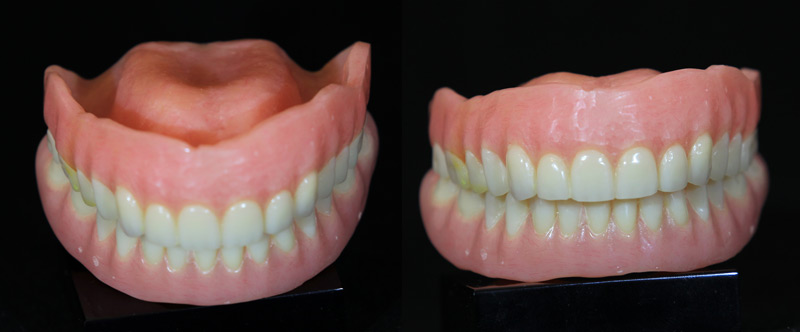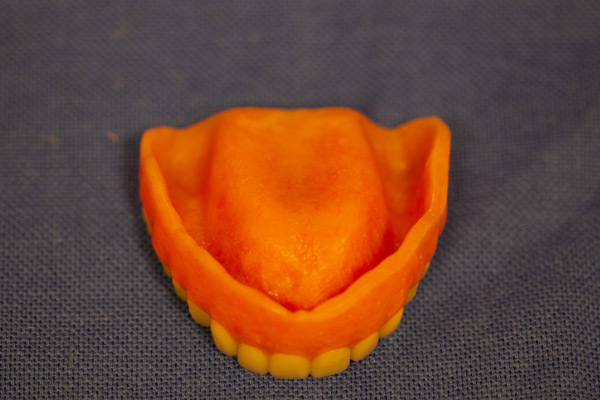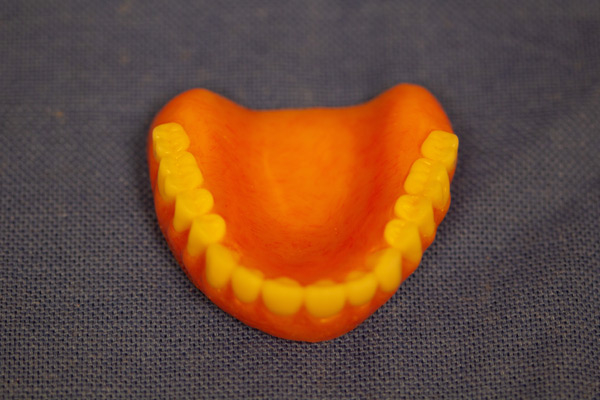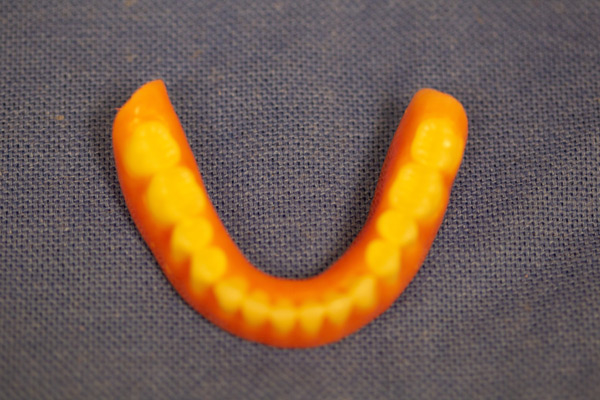
What it is:
A complete denture is an appliance that replaces all the teeth in one jaw. It is not cemented or attached to any structures in the mouth and can be taken out.
The base of a complete denture is made of pink acrylic. The teeth are made of tooth colored acrylic or porcelain which attach into the base.
A complete denture restores function and appearance to a jaw with no teeth. It is the most cost-effective way of replacing all the teeth in one jaw. A complete denture can also provide important support to facial structures such as the lips, helping to maintain a more youthful appearance.
Uneven or excessive bite forces may cause wear or fracture of the denture teeth or denture base. Chewing will make a complete denture rock slightly in the mouth; the more uneven the biting force, the more the complete denture will rock.
A complete denture, even under the best of circumstances, DOES NOT have the same chewing efficiency as natural teeth. The ability to chew food depends on the stability, support and retention of the denture.
Stability, support and retention are affected by many factors, including the amount and type of bone gums, and saliva present in the patient’s mouth as well as the shape of the patient’s jaw and how it fits with the opposing teeth.
Procedure:
The process of making a set of dentures has a few steps to insure that they fit and look good. Some steps vary if you have a few remaining teeth but overall the step are the same.
- Take an impression or oral scan of the upper and lower arches and get exact replicas of the mouth.
- A baseplate and wax-rim will be made and used to get a bite registration or in other words get a record of how the upper and lower jaws come together. We also determine the shade or color of the teeth that will be used.
- The information that was obtained from the dental appointment is then transferred to an articulator or artificial jaw. Teeth are place in the wax and made ready for test try.
- The test dentures with the teeth set in wax then are tried in the mouth to determine if they look good and that the records that were taken are accurate. Speech is tested and lengthens measured. We want to make sure that you see the right amount of teeth when you smile.
- The dentures are then processed into acrylic and made ready for delivery. Once the dentures are given to the patient there might be some areas that rub over time and will need adjusted
Patient Benefits:
The alternatives to having a complete denture are:
- Implants which attach to:
- Crowns or Bridges
- A complete implant retained or implant supported denture
- Leave your mouth as it is
Things to Remember:
- To keep the tissue under the appliance healthy, your denture should be left out of your mouth during sleep.
- The teeth in the denture are not as strong as your natural teeth and you will not be able to chew as heavily on them.
- The appliance will tend to get food trapped underneath it and you ay have to remove and clean it after eating.
- The fit between a complete denture and the gums is very important for retention, and therefore must be re-established every 2-5 years as gums are constantly undergoing small changes.






